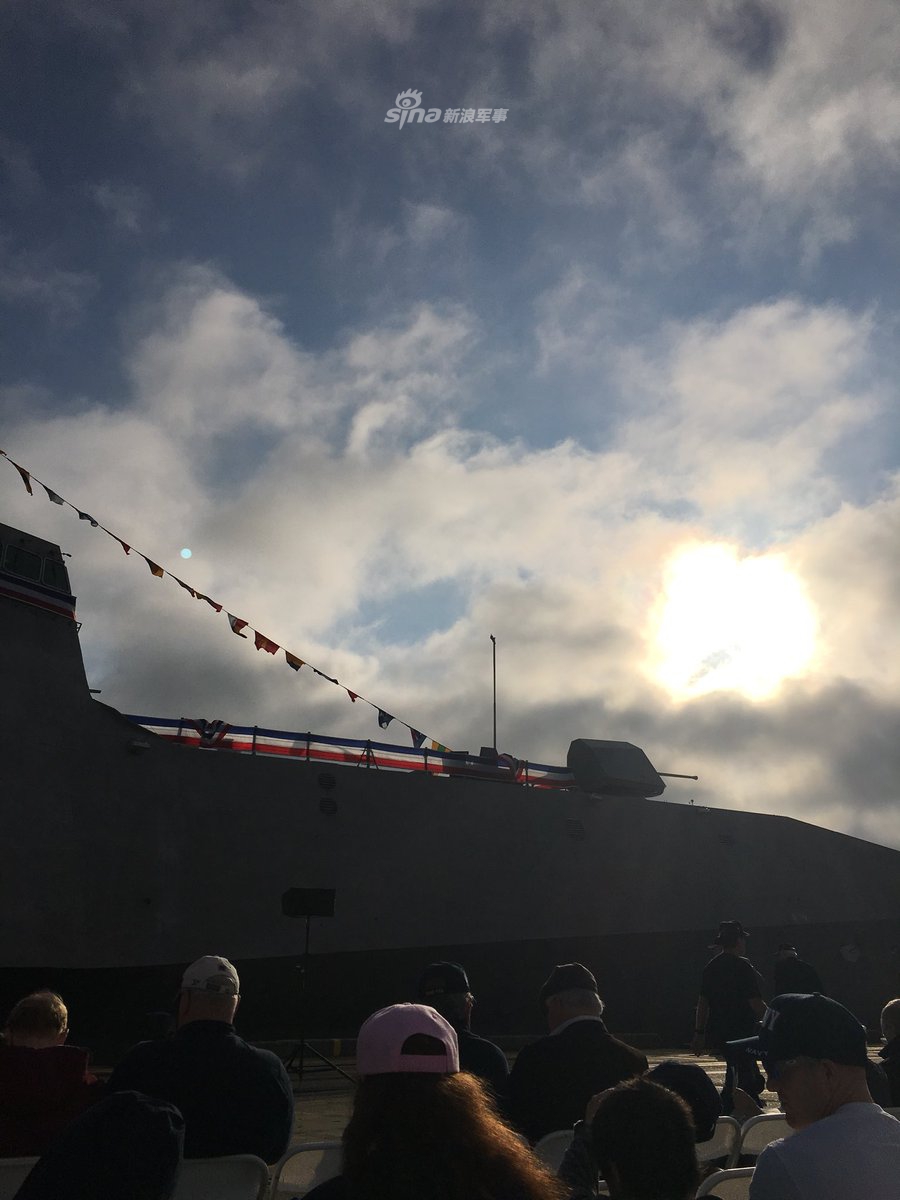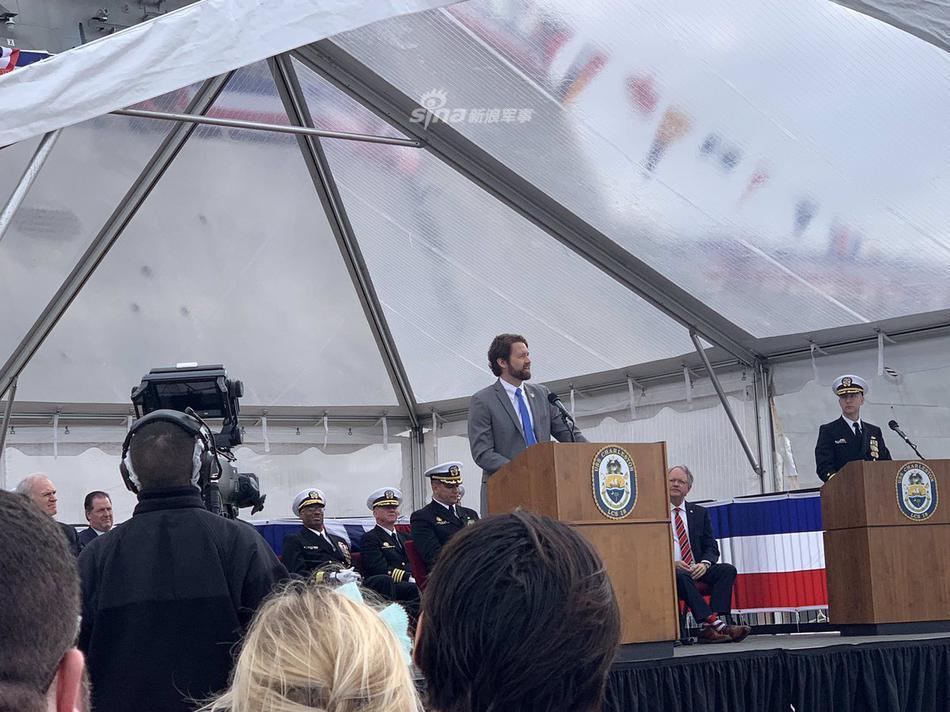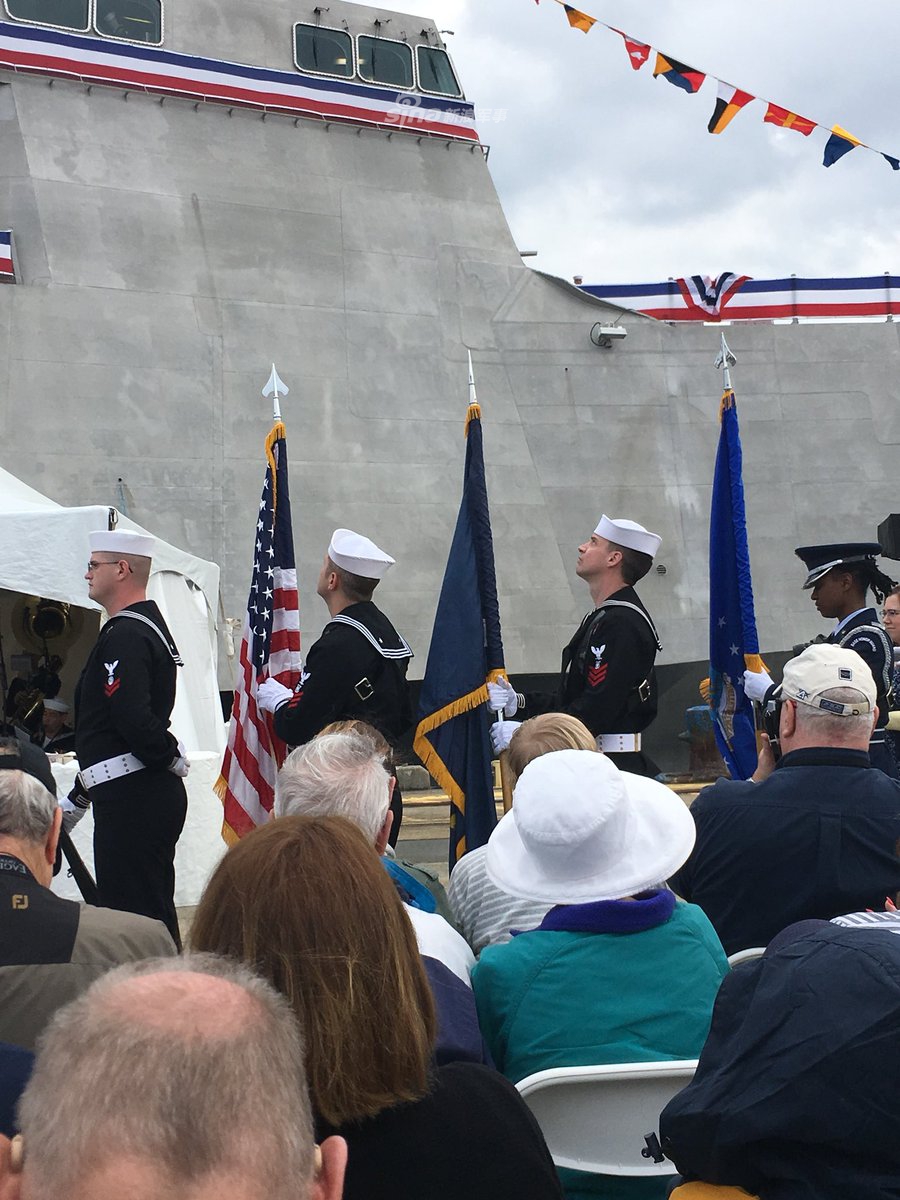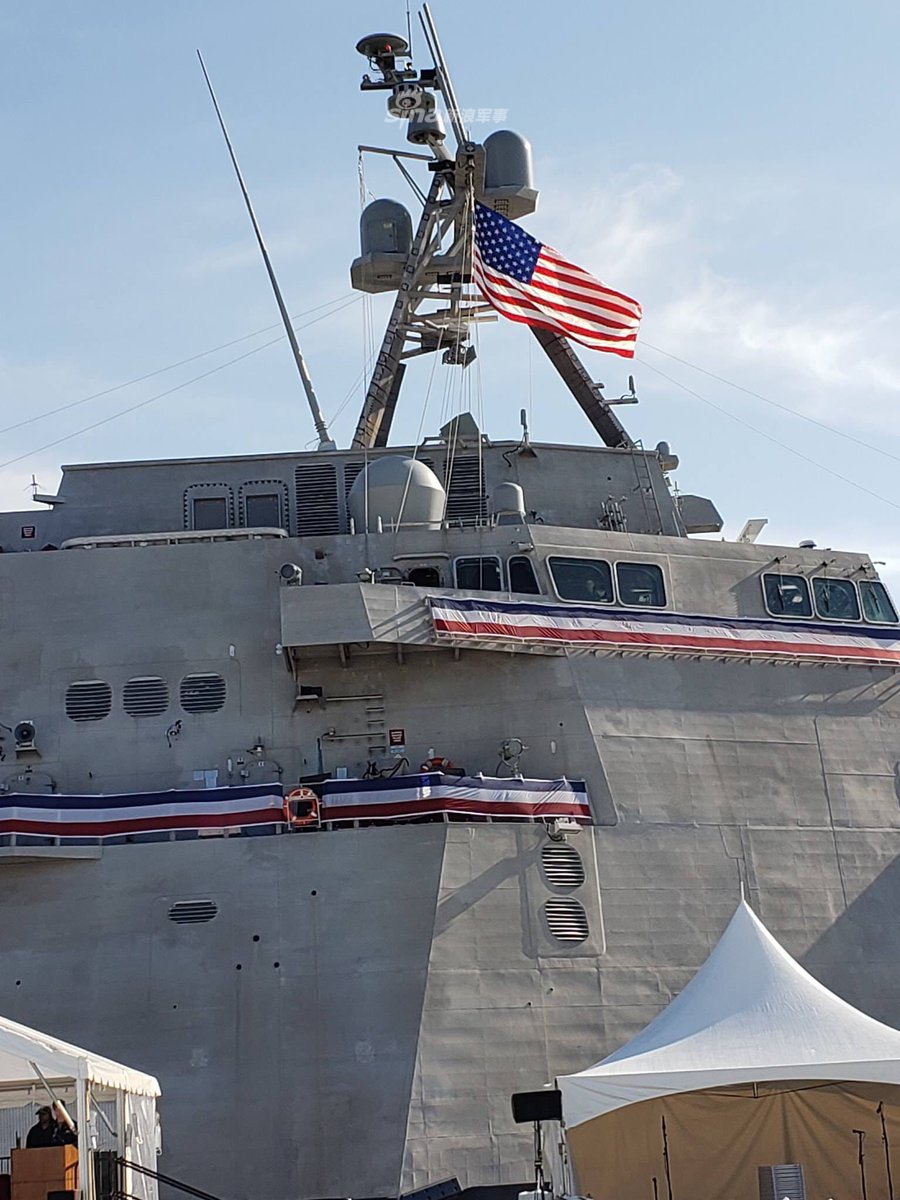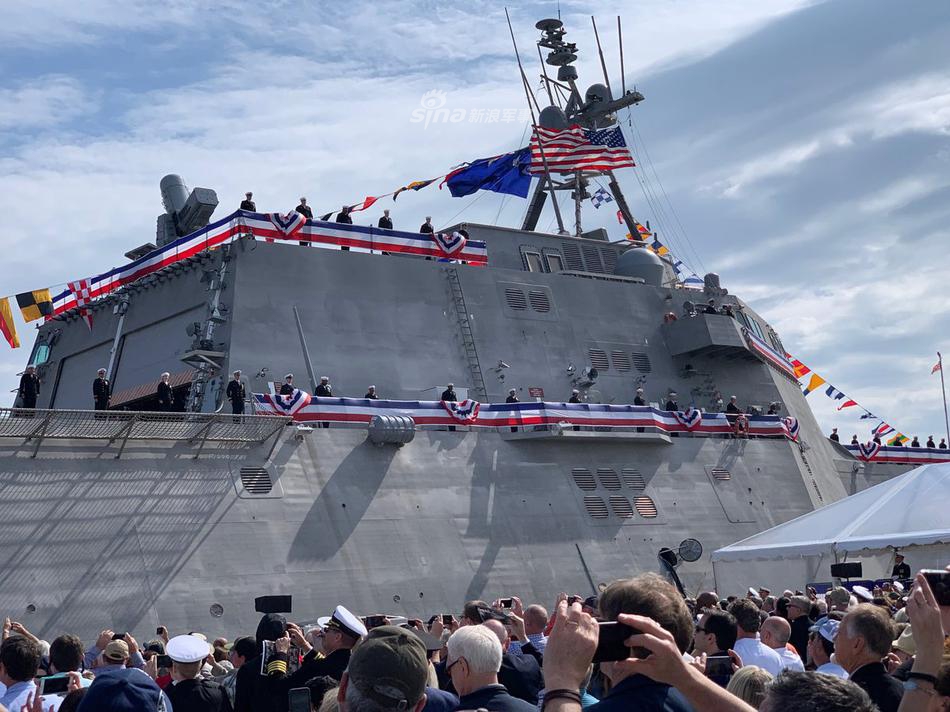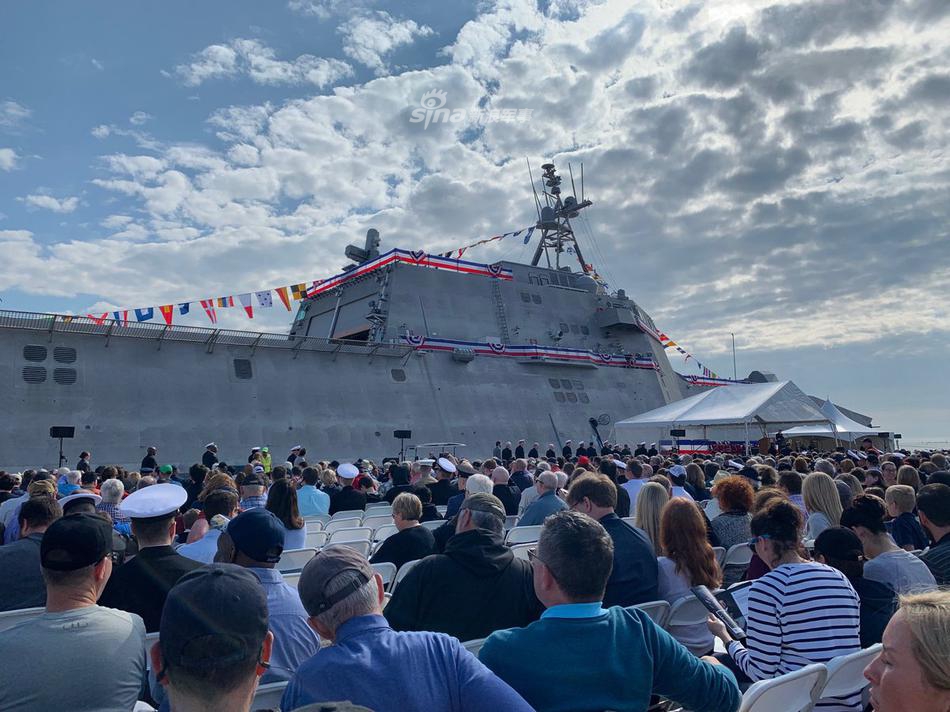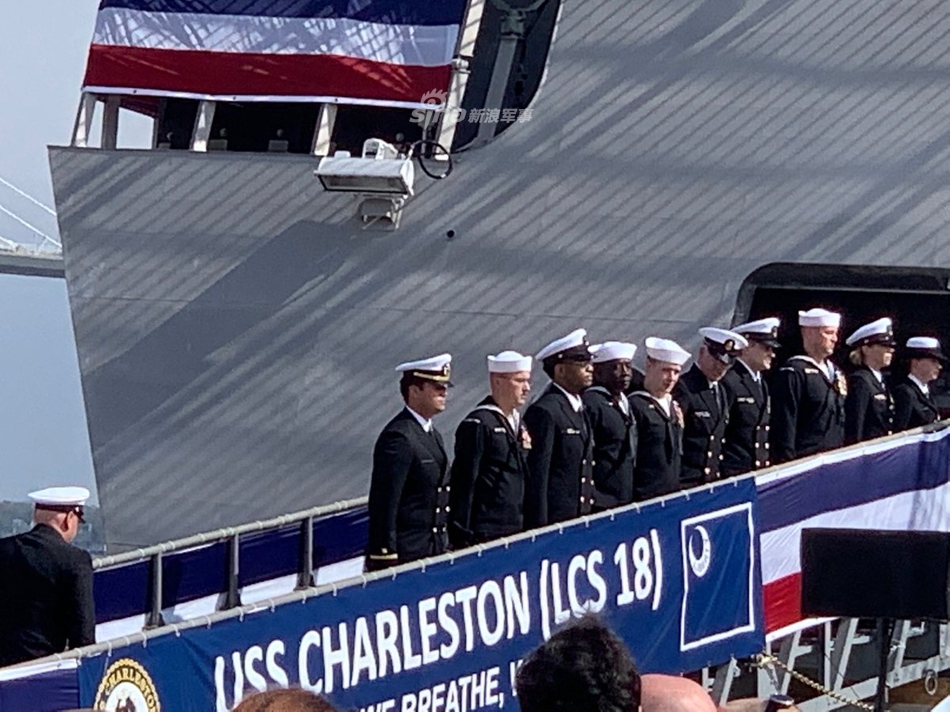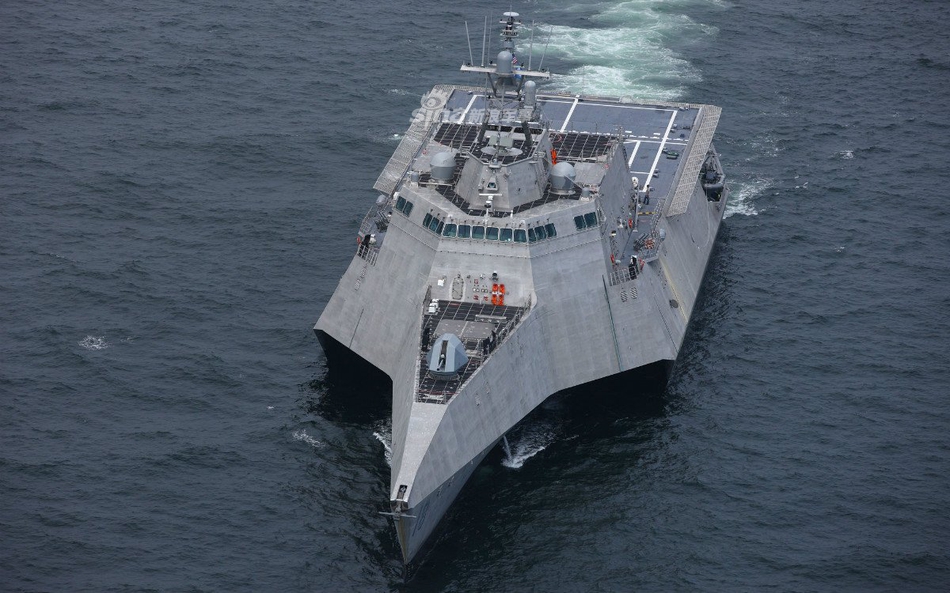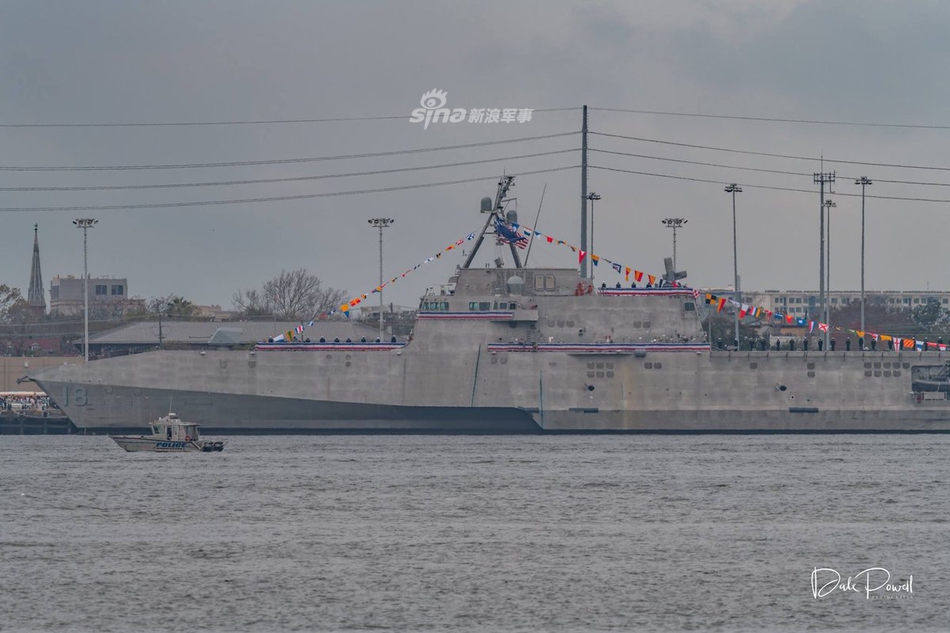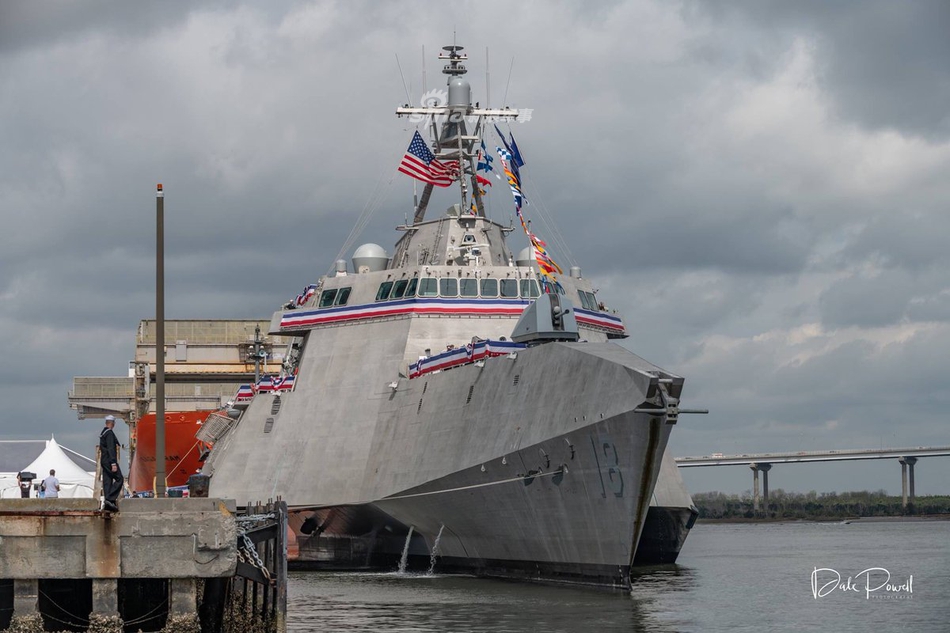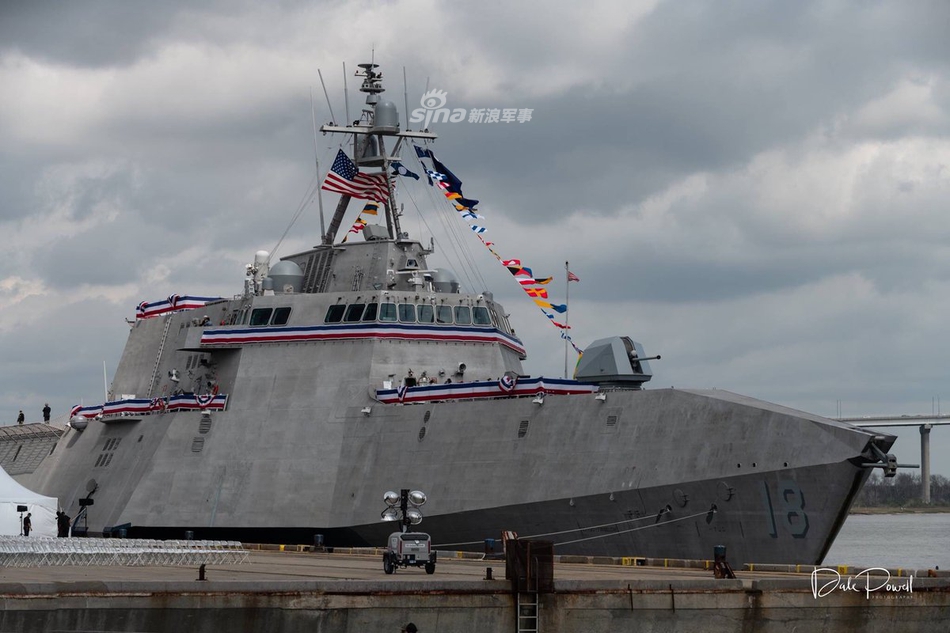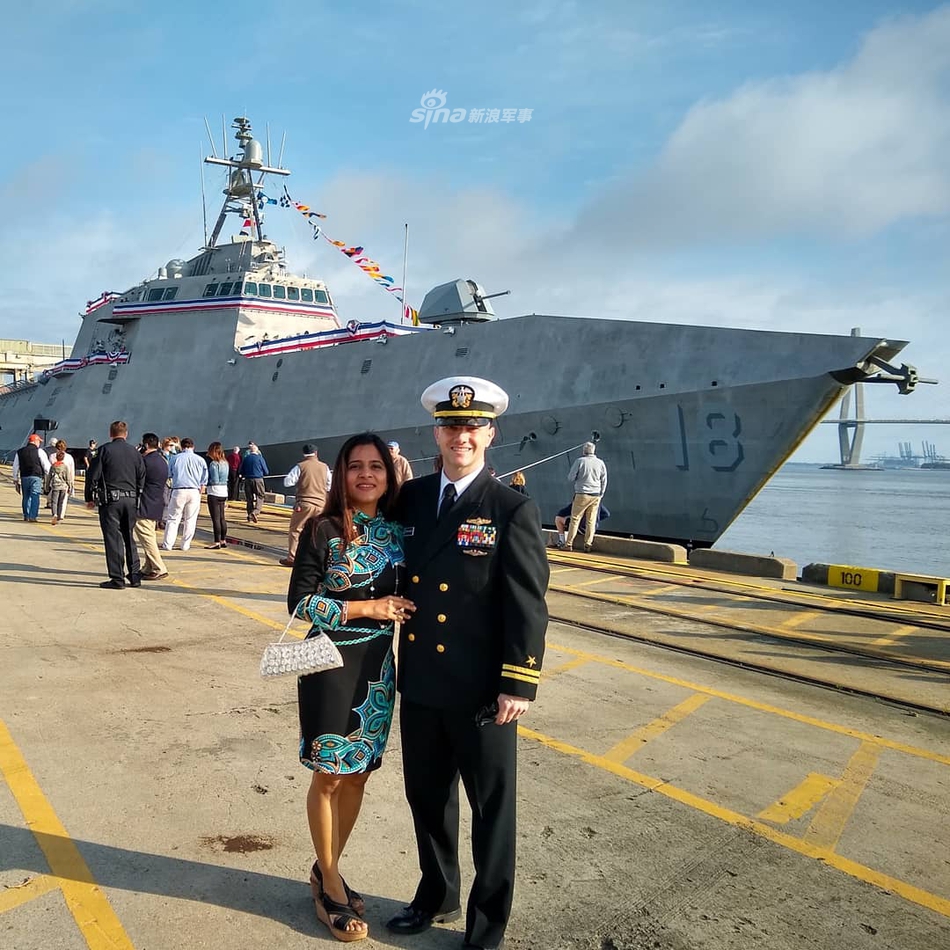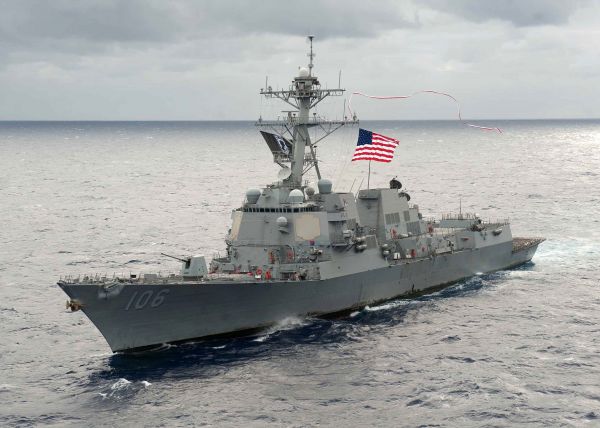- Joined
- Nov 29, 2016
- Messages
- 5,674
- Points
- 63
http://slide.mil.news.sina.com.cn/h/slide_8_198_70837.html#p=1
不必将其放在眼中!美国海军第18艘濒海战斗舰服役
支持 键翻阅图片 列表查看
全屏观看
2019.03.12 11:22:19
1 / 14
2019年3月2日,美国海军第18艘濒海战斗舰查尔斯顿号加入美国海军现役,该舰将驻扎在圣地亚哥港。
不必将其放在眼中!美国海军第18艘濒海战斗舰服役
支持 键翻阅图片 列表查看
全屏观看
2019.03.12 11:22:19
2 / 14
2019年3月2日,美国海军第18艘濒海战斗舰查尔斯顿号加入美国海军现役,该舰将驻扎在圣地亚哥港。
不必将其放在眼中!美国海军第18艘濒海战斗舰服役
支持 键翻阅图片 列表查看
全屏观看
2019.03.12 11:22:19
3 / 14
2019年3月2日,美国海军第18艘濒海战斗舰查尔斯顿号加入美国海军现役,该舰将驻扎在圣地亚哥港。
不必将其放在眼中!美国海军第18艘濒海战斗舰服役
支持 键翻阅图片 列表查看
全屏观看
2019.03.12 11:22:19
2019年3月2日,美国海军第18艘濒海战斗舰查尔斯顿号加入美国海军现役,该舰将驻扎在圣地亚哥港。
不必将其放在眼中!美国海军第18艘濒海战斗舰服役
支持 键翻阅图片 列表查看
全屏观看
2019.03.12 11:22:19
2019年3月2日,美国海军第18艘濒海战斗舰查尔斯顿号加入美国海军现役,该舰将驻扎在圣地亚哥港。
不必将其放在眼中!美国海军第18艘濒海战斗舰服役
支持 键翻阅图片 列表查看
全屏观看
2019.03.12 11:22:19
2019年3月2日,美国海军第18艘濒海战斗舰查尔斯顿号加入美国海军现役,该舰将驻扎在圣地亚哥港。
不必将其放在眼中!美国海军第18艘濒海战斗舰服役
支持 键翻阅图片 列表查看
全屏观看
2019.03.12 11:22:19
2019年3月2日,美国海军第18艘濒海战斗舰查尔斯顿号加入美国海军现役,该舰将驻扎在圣地亚哥港。
不必将其放在眼中!美国海军第18艘濒海战斗舰服役
支持 键翻阅图片 列表查看
全屏观看
2019.03.12 11:22:19
2019年3月2日,美国海军第18艘濒海战斗舰查尔斯顿号加入美国海军现役,该舰将驻扎在圣地亚哥港。
不必将其放在眼中!美国海军第18艘濒海战斗舰服役
支持 键翻阅图片 列表查看
全屏观看
2019.03.12 11:22:19
2019年3月2日,美国海军第18艘濒海战斗舰查尔斯顿号加入美国海军现役,该舰将驻扎在圣地亚哥港
不必将其放在眼中!美国海军第18艘濒海战斗舰服役
支持 键翻阅图片 列表查看
全屏观看
2019.03.12 11:22:19
2019年3月2日,美国海军第18艘濒海战斗舰查尔斯顿号加入美国海军现役,该舰将驻扎在圣地亚哥港。
不必将其放在眼中!美国海军第18艘濒海战斗舰服役
支持 键翻阅图片 列表查看
全屏观看
2019.03.12 11:22:19
2019年3月2日,美国海军第18艘濒海战斗舰查尔斯顿号加入美国海军现役,该舰将驻扎在圣地亚哥港。
不必将其放在眼中!美国海军第18艘濒海战斗舰服役
支持 键翻阅图片 列表查看
全屏观看
2019.03.12 11:22:19
2019年3月2日,美国海军第18艘濒海战斗舰查尔斯顿号加入美国海军现役,该舰将驻扎在圣地亚哥港。
不必将其放在眼中!美国海军第18艘濒海战斗舰服役
支持 键翻阅图片 列表查看
全屏观看
2019.03.12 11:22:19
2019年3月2日,美国海军第18艘濒海战斗舰查尔斯顿号加入美国海军现役,该舰将驻扎在圣地亚哥港。
Http://slide.mil.news.sina.com.cn/h/slide_8_198_70837.html#p=1
Don't have to put it in your eyes! Service of the 18th Inmarsional Battleship of the US Navy
Support button flip through pictures list view
Full screen view
2019.03.12 11:22:19
1 / 14
On March 2, 2019, the US Navy's 18th Littoral Combat Ship Charleston joined the US Navy in active service, and the ship will be stationed at the Port of Santiago.
Don't have to put it in your eyes! Service of the 18th Inmarsional Battleship of the US Navy
Support button flip through pictures list view
Full screen view
2019.03.12 11:22:19
2 / 14
On March 2, 2019, the US Navy's 18th Littoral Combat Ship Charleston joined the US Navy in active service, and the ship will be stationed at the Port of Santiago.
Don't have to put it in your eyes! Service of the 18th Inmarsional Battleship of the US Navy
Support button flip through pictures list view
Full screen view
2019.03.12 11:22:19
3 / 14
On March 2, 2019, the US Navy's 18th Littoral Combat Ship Charleston joined the US Navy in active service, and the ship will be stationed at the Port of Santiago.
Don't have to put it in your eyes! Service of the 18th Inmarsional Battleship of the US Navy
Support button flip through pictures list view
Full screen view
2019.03.12 11:22:19
4 / 14
On March 2, 2019, the US Navy's 18th Littoral Combat Ship Charleston joined the US Navy in active service, and the ship will be stationed at the Port of Santiago.
Don't have to put it in your eyes! Service of the 18th Inmarsional Battleship of the US Navy
Support button flip through pictures list view
Full screen view
2019.03.12 11:22:19
5 / 14
On March 2, 2019, the US Navy's 18th Littoral Combat Ship Charleston joined the US Navy in active service, and the ship will be stationed at the Port of Santiago.
Don't have to put it in your eyes! Service of the 18th Inmarsional Battleship of the US Navy
Support button flip through pictures list view
Full screen view
2019.03.12 11:22:19
6 / 14
On March 2, 2019, the US Navy's 18th Littoral Combat Ship Charleston joined the US Navy in active service, and the ship will be stationed at the Port of Santiago.
Don't have to put it in your eyes! Service of the 18th Inmarsional Battleship of the US Navy
Support button flip through pictures list view
Full screen view
2019.03.12 11:22:19
7 / 14
On March 2, 2019, the US Navy's 18th Littoral Combat Ship Charleston joined the US Navy in active service, and the ship will be stationed at the Port of Santiago.
Don't have to put it in your eyes! Service of the 18th Inmarsional Battleship of the US Navy
Support button flip through pictures list view
Full screen view
2019.03.12 11:22:19
8 / 14
On March 2, 2019, the US Navy's 18th Littoral Combat Ship Charleston joined the US Navy in active service, and the ship will be stationed at the Port of Santiago.
Don't have to put it in your eyes! Service of the 18th Inmarsional Battleship of the US Navy
Support button flip through pictures list view
Full screen view
2019.03.12 11:22:19
9 / 14
On March 2, 2019, the US Navy’s 18th Littoral Combat Ship Charleston joined the US Navy in active service. The ship will be stationed at the Port of San Diego.
Don't have to put it in your eyes! Service of the 18th Inmarsional Battleship of the US Navy
Support button flip through pictures list view
Full screen view
2019.03.12 11:22:19
10 / 14
On March 2, 2019, the US Navy's 18th Littoral Combat Ship Charleston joined the US Navy in active service, and the ship will be stationed at the Port of Santiago.
Don't have to put it in your eyes! Service of the 18th Inmarsional Battleship of the US Navy
Support button flip through pictures list view
Full screen view
2019.03.12 11:22:19
11 / 14
On March 2, 2019, the US Navy's 18th Littoral Combat Ship Charleston joined the US Navy in active service, and the ship will be stationed at the Port of Santiago.
Don't have to put it in your eyes! Service of the 18th Inmarsional Battleship of the US Navy
Support button flip through pictures list view
Full screen view
2019.03.12 11:22:19
12 / 14
On March 2, 2019, the US Navy's 18th Littoral Combat Ship Charleston joined the US Navy in active service, and the ship will be stationed at the Port of Santiago.
Don't have to put it in your eyes! Service of the 18th Inmarsional Battleship of the US Navy
Support button flip through pictures list view
Full screen view
2019.03.12 11:22:19
13 / 14
On March 2, 2019, the US Navy’s 18th Littoral Combat Ship
不必将其放在眼中!美国海军第18艘濒海战斗舰服役
支持 键翻阅图片 列表查看
全屏观看
2019.03.12 11:22:19
1 / 14
2019年3月2日,美国海军第18艘濒海战斗舰查尔斯顿号加入美国海军现役,该舰将驻扎在圣地亚哥港。
不必将其放在眼中!美国海军第18艘濒海战斗舰服役
支持 键翻阅图片 列表查看
全屏观看
2019.03.12 11:22:19
2 / 14
2019年3月2日,美国海军第18艘濒海战斗舰查尔斯顿号加入美国海军现役,该舰将驻扎在圣地亚哥港。
不必将其放在眼中!美国海军第18艘濒海战斗舰服役
支持 键翻阅图片 列表查看
全屏观看
2019.03.12 11:22:19
3 / 14
2019年3月2日,美国海军第18艘濒海战斗舰查尔斯顿号加入美国海军现役,该舰将驻扎在圣地亚哥港。
不必将其放在眼中!美国海军第18艘濒海战斗舰服役
支持 键翻阅图片 列表查看
全屏观看
2019.03.12 11:22:19
2019年3月2日,美国海军第18艘濒海战斗舰查尔斯顿号加入美国海军现役,该舰将驻扎在圣地亚哥港。
不必将其放在眼中!美国海军第18艘濒海战斗舰服役
支持 键翻阅图片 列表查看
全屏观看
2019.03.12 11:22:19
2019年3月2日,美国海军第18艘濒海战斗舰查尔斯顿号加入美国海军现役,该舰将驻扎在圣地亚哥港。
不必将其放在眼中!美国海军第18艘濒海战斗舰服役
支持 键翻阅图片 列表查看
全屏观看
2019.03.12 11:22:19
2019年3月2日,美国海军第18艘濒海战斗舰查尔斯顿号加入美国海军现役,该舰将驻扎在圣地亚哥港。
不必将其放在眼中!美国海军第18艘濒海战斗舰服役
支持 键翻阅图片 列表查看
全屏观看
2019.03.12 11:22:19
2019年3月2日,美国海军第18艘濒海战斗舰查尔斯顿号加入美国海军现役,该舰将驻扎在圣地亚哥港。
不必将其放在眼中!美国海军第18艘濒海战斗舰服役
支持 键翻阅图片 列表查看
全屏观看
2019.03.12 11:22:19
2019年3月2日,美国海军第18艘濒海战斗舰查尔斯顿号加入美国海军现役,该舰将驻扎在圣地亚哥港。
不必将其放在眼中!美国海军第18艘濒海战斗舰服役
支持 键翻阅图片 列表查看
全屏观看
2019.03.12 11:22:19
2019年3月2日,美国海军第18艘濒海战斗舰查尔斯顿号加入美国海军现役,该舰将驻扎在圣地亚哥港
不必将其放在眼中!美国海军第18艘濒海战斗舰服役
支持 键翻阅图片 列表查看
全屏观看
2019.03.12 11:22:19
2019年3月2日,美国海军第18艘濒海战斗舰查尔斯顿号加入美国海军现役,该舰将驻扎在圣地亚哥港。
不必将其放在眼中!美国海军第18艘濒海战斗舰服役
支持 键翻阅图片 列表查看
全屏观看
2019.03.12 11:22:19
2019年3月2日,美国海军第18艘濒海战斗舰查尔斯顿号加入美国海军现役,该舰将驻扎在圣地亚哥港。
不必将其放在眼中!美国海军第18艘濒海战斗舰服役
支持 键翻阅图片 列表查看
全屏观看
2019.03.12 11:22:19
2019年3月2日,美国海军第18艘濒海战斗舰查尔斯顿号加入美国海军现役,该舰将驻扎在圣地亚哥港。
不必将其放在眼中!美国海军第18艘濒海战斗舰服役
支持 键翻阅图片 列表查看
全屏观看
2019.03.12 11:22:19
2019年3月2日,美国海军第18艘濒海战斗舰查尔斯顿号加入美国海军现役,该舰将驻扎在圣地亚哥港。
Http://slide.mil.news.sina.com.cn/h/slide_8_198_70837.html#p=1
Don't have to put it in your eyes! Service of the 18th Inmarsional Battleship of the US Navy
Support button flip through pictures list view
Full screen view
2019.03.12 11:22:19
1 / 14
On March 2, 2019, the US Navy's 18th Littoral Combat Ship Charleston joined the US Navy in active service, and the ship will be stationed at the Port of Santiago.
Don't have to put it in your eyes! Service of the 18th Inmarsional Battleship of the US Navy
Support button flip through pictures list view
Full screen view
2019.03.12 11:22:19
2 / 14
On March 2, 2019, the US Navy's 18th Littoral Combat Ship Charleston joined the US Navy in active service, and the ship will be stationed at the Port of Santiago.
Don't have to put it in your eyes! Service of the 18th Inmarsional Battleship of the US Navy
Support button flip through pictures list view
Full screen view
2019.03.12 11:22:19
3 / 14
On March 2, 2019, the US Navy's 18th Littoral Combat Ship Charleston joined the US Navy in active service, and the ship will be stationed at the Port of Santiago.
Don't have to put it in your eyes! Service of the 18th Inmarsional Battleship of the US Navy
Support button flip through pictures list view
Full screen view
2019.03.12 11:22:19
4 / 14
On March 2, 2019, the US Navy's 18th Littoral Combat Ship Charleston joined the US Navy in active service, and the ship will be stationed at the Port of Santiago.
Don't have to put it in your eyes! Service of the 18th Inmarsional Battleship of the US Navy
Support button flip through pictures list view
Full screen view
2019.03.12 11:22:19
5 / 14
On March 2, 2019, the US Navy's 18th Littoral Combat Ship Charleston joined the US Navy in active service, and the ship will be stationed at the Port of Santiago.
Don't have to put it in your eyes! Service of the 18th Inmarsional Battleship of the US Navy
Support button flip through pictures list view
Full screen view
2019.03.12 11:22:19
6 / 14
On March 2, 2019, the US Navy's 18th Littoral Combat Ship Charleston joined the US Navy in active service, and the ship will be stationed at the Port of Santiago.
Don't have to put it in your eyes! Service of the 18th Inmarsional Battleship of the US Navy
Support button flip through pictures list view
Full screen view
2019.03.12 11:22:19
7 / 14
On March 2, 2019, the US Navy's 18th Littoral Combat Ship Charleston joined the US Navy in active service, and the ship will be stationed at the Port of Santiago.
Don't have to put it in your eyes! Service of the 18th Inmarsional Battleship of the US Navy
Support button flip through pictures list view
Full screen view
2019.03.12 11:22:19
8 / 14
On March 2, 2019, the US Navy's 18th Littoral Combat Ship Charleston joined the US Navy in active service, and the ship will be stationed at the Port of Santiago.
Don't have to put it in your eyes! Service of the 18th Inmarsional Battleship of the US Navy
Support button flip through pictures list view
Full screen view
2019.03.12 11:22:19
9 / 14
On March 2, 2019, the US Navy’s 18th Littoral Combat Ship Charleston joined the US Navy in active service. The ship will be stationed at the Port of San Diego.
Don't have to put it in your eyes! Service of the 18th Inmarsional Battleship of the US Navy
Support button flip through pictures list view
Full screen view
2019.03.12 11:22:19
10 / 14
On March 2, 2019, the US Navy's 18th Littoral Combat Ship Charleston joined the US Navy in active service, and the ship will be stationed at the Port of Santiago.
Don't have to put it in your eyes! Service of the 18th Inmarsional Battleship of the US Navy
Support button flip through pictures list view
Full screen view
2019.03.12 11:22:19
11 / 14
On March 2, 2019, the US Navy's 18th Littoral Combat Ship Charleston joined the US Navy in active service, and the ship will be stationed at the Port of Santiago.
Don't have to put it in your eyes! Service of the 18th Inmarsional Battleship of the US Navy
Support button flip through pictures list view
Full screen view
2019.03.12 11:22:19
12 / 14
On March 2, 2019, the US Navy's 18th Littoral Combat Ship Charleston joined the US Navy in active service, and the ship will be stationed at the Port of Santiago.
Don't have to put it in your eyes! Service of the 18th Inmarsional Battleship of the US Navy
Support button flip through pictures list view
Full screen view
2019.03.12 11:22:19
13 / 14
On March 2, 2019, the US Navy’s 18th Littoral Combat Ship

